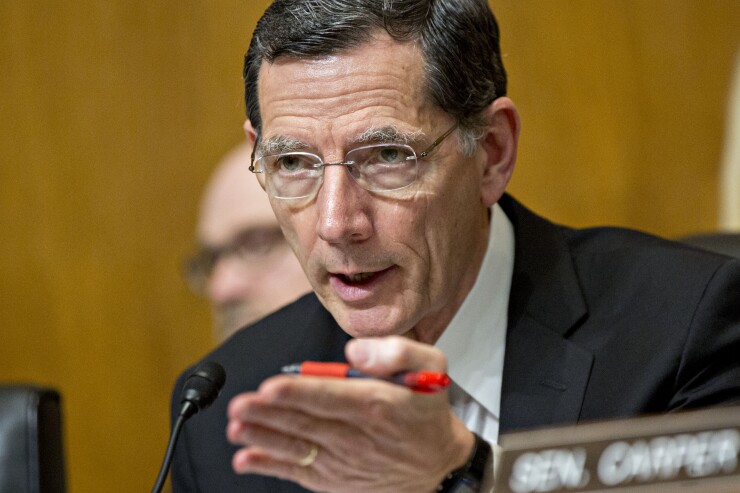Airports are looking for any way possible to meet $130 billion in infrastructure needs over the next five years, and are hopeful that certain provisions under consideration by federal lawmakers can provide more borrowing power and financing options.
Airport lobbyists generally view sweeping infrastructure funding legislation as unlikely to become law in the near future, and are focusing on what they view as key objectives that could pass without requiring a larger bill. Generating the most hope is an increase or elimination in the cap on PFCs, which are per-ticket charges airports collect but which are capped at $4.50 by federal law.
The PFC is a major priority for airports, said Annie Russo, vice president of governmental and political affairs at Airports Council International.
ACI wants to increase the PFC to $8.50 from $4.50. PFCs are often the revenue stream airports use to support bond repayment.
“We are getting to the point where airports are saddled with lots of debt,” Russo said. The bond market continues to be the preferred way to fund projects, but they still need to pay back their bonds, Russo added.

An increase in the PFC would allow airports to pay back current debt at a faster rate and allow them to issue new debt for new projects, Russo said.
Airlines oppose any increase in the PFC, while some conservative think tanks and federal budget watchdog groups see support it because they see it as a way to shift some of the financial responsibility for airports away from Washington.
Rep. Thomas Massie, R-Ky., introduced H.R.3791, the Investing in America: Rebuilding America’s Airport Infrastructure Act,
Russo called the bill a great step in the right direction and is optimistic that it could increase.
“A bill like this shows that there is bipartisan support across a broad political spectrum,” Russo said.
Another avenue airports are looking to explore is the Transportation Infrastructure Finance and Innovation Act. In February, Sen. Tammy Duckworth, D-Ill., reintroduced S.563, the Transportation Infrastructure Finance and Innovation Act for Airports, which would expand TIFIA eligibility for airports.
ACI endorsed the bill and Russo said it has been working with Duckworth to move it along. The expansion was included in a larger surface transportation reauthorization bill introduced in July by Sen. John Barrasso, R-Wyo., the America’s Transportation Infrastructure Act of 2019.

In the new bill, lawmakers allocated as much as 15% in the TIFIA program to airports. It would expand the intermodal eligibility for airports.
“There are lots of airports who are very interested and have a very strong focus on connectivity to other modes of transportation,” Russo said. “This would provide another loan option for airports.”
Airports now have limited access to traditional TIFIA funding. In 2014, Loudoun County, Virginia, was able to close on a $195 million TIFIA loan for a Dulles Rail Project to finance the extension of Metrorail’s Silver Line into Loudoun. Loudoun applied for the TIFIA loan in conjunction with its local partners, Fairfax County and the Metropolitan Washington Airports Authority.
As for an overall infrastructure bill passing this year, Russo isn’t entirely optimistic, though she noted that more and more pieces were coming together.
“Although the House and Senate have both begun working on pieces of those, for it all to come together, I think will take some more time,” Russo said. “I don’t know if I see that happening before the end of the year.”
It will be a challenge to push out an infrastructure bill, said Brad Van Dam, senior vice president of government affairs at the American Association of Airport Executives.
“It seems challenging at this point from my perspective,” Van Dam said. “Earlier in the year it seemed like there was at least a ray of hope that lawmakers in the administration could come together on a broad bipartisan package.”
Instead, Van Dam is shifting into gear on other priorities such as using appropriations and raising the PFC.
Van Dam was hopeful that a final appropriations bill would get enacted by the end of September. Over the last few years, Congress has approved an additional $1.5 billion in supplementary discretionary funds for airport improvement programs. Van Dam wants to see that increase. The House passed its general appropriations bill in June and Van Dam was hopeful that it will become law.
“It’s a tall order since the Senate hasn’t been doing as much as their House counterparts, but with a deal in place, hopefully they’ll be able to move forward fairly quickly on those bills once they get back,” Van Dam said.





